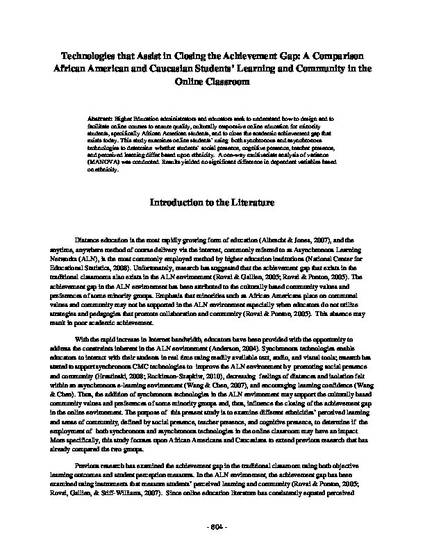
Article
Technologies that Assist in Closing the Achievement Gap: A Comparison African American and Caucasian Students’ Learning and Community in the Online Classroom
Faculty Publications and Presentations
Publication Date
1-1-2010
Document Type
Conference Proceeding
Disciplines
Comments
Rockinson-Szapkiw, A., Dunn, R. & Holder, D. (2010). Technologies that Assist in Closing the Achievement Gap: A Comparison African American and Caucasian Students’ Learning and Community in the Online Classroom. In D. Gibson & B. Dodge (Eds.), Proceedings of Society for Information Technology & Teacher Education International Conference 2010 (pp. 804-809). Chesapeake, VA: AACE. Retrieved from http://www.editlib.org/p/33444. Used by permission. Copyright 2010.
Abstract
Higher Education administrators and educators seek to understand how to design and to facilitate online courses to ensure quality, culturally responsive online education for minority students, specifically African American students, and to close the academic achievement gap that exists today. This study examines online students’ using both synchronous and asynchronous technologies to determine whether students’ social presence, cognitive presence, teacher presence, and perceived learning differ based upon ethnicity. A one-way multivariate analysis of variance (MANOVA) was conducted. Results yielded no significant difference in dependent variables based on ethnicity.
Citation Information
Amanda J. Rockinson-Szapkiw, Randall Dunn and Holder David. "Technologies that Assist in Closing the Achievement Gap: A Comparison African American and Caucasian Students’ Learning and Community in the Online Classroom" (2010) Available at: http://works.bepress.com/randall_dunn/23/
